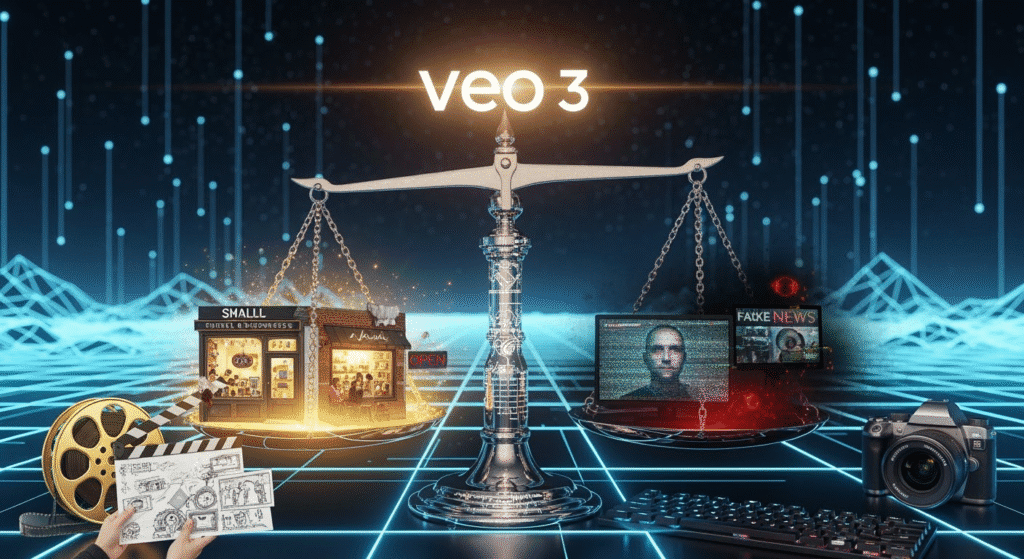A Surprise Expansion That Landed Like a Trailer Drop

Google didn’t whisper this news—it blasted it. Just 100 hours after unveiling Veo 3, the search-giant-turned-AI-powerhouse swung open the gates to 71 more countries, inviting a global wave of filmmakers, meme-smiths, and casual tinkerers to try the video model that had already lit up social feeds. If you live in the European Union, you’ll have to wait; Brussels remains outside the velvet rope for now.
Why the rush? Silicon Valley insiders say Google wants lightning-in-a-bottle virality while the demo clips are still bouncing around X and TikTok. Nobody stays top of mind for long in 2025, so Google accelerated the rollout, banking on FOMO to keep Gemini’s momentum roaring.
Ten Free Shots, Then the Meter Starts Running
Open the Gemini web interface, and a neat little banner greets Gemini Pro subscribers: “Here, have ten Veo 3 generations on us.” It’s a one-time sampler use them wisely. After that, the credit card comes out. The Ultra plan sits at a hefty $250 per month, though early adopters snag a half-off, three-month promo. Ultra owners gain a daily refresh of generation credits plus a beefy 125-clip allowance inside Veo-powered Flow Mode, a workspace aimed at AI filmmakers.
Is $250 ridiculous? Podcast host Gavin Purcell calls it “the priciest AI tier we’ve seen,” but he also admits he paid it to review Veo 3. Value, apparently, depends on whether you’re making cat videos or corporate ads.
Why Everyone’s Freaking Out About Audio
Previous text-to-video tools gave us silent movies. Veo 3 adds dialogue, sound design, and even music in a single shot. That difference jolted longtime AI commentator Kevin Pereira: “For the first time you have to stop scrolling and ask, is this clip real?” Multimodality here means one prompt, three sensory layers picture, voice, and ambience all co-engineered by the model.
The lip-sync isn’t perfect, but early demos already nail timing. One viral prompt asked for a dog racing through a house and onto a porch as an ice-cream truck drifted by. Veo nailed it barks, paws on hardwood, distant jingle of truck bells. Audiences gawked. Critics gulped. That’s the power of adding ears to eyes.
Prompt Adherence, Physics, and Fortnite Faux Pas

Beta users rave about Veo’s camera control: slow-pans, dolly zooms, rack focus. It can mimic real-world physics liquid splashes, snow flurries, even weight shifts during a skateboard kickflip. One tester generated what looked like Fortnite gameplay without typing the word “Fortnite.” Copyright lawyers nearly fainted. Google’s safety filters missed the reference because the prompt used no brand keywords. Expect stricter guardrails after that slip.
Yet the tech’s precision dazzles creatives. Throw in a multi-sentence prompt about a steamy ramen stall at dusk, and Veo lights the lanterns, renders condensation on broth, and pumps ambient chatter through virtual alleyways. The execution feels less like a random GAN hallucination and more like a junior cinematographer following marching orders.
Gemini Diffusion, 2.5 Flash, and “Deep Think” Reasoning
Veo 3 isn’t Google’s only experiment. The company quietly previewed Gemini Diffusion, a language model that generates text by denoising words instead of predicting them token-by-token. Meanwhile, a slimmed-down Gemini 2.5 Flash just leaped to #2 on the LMSYS leaderboard, beaten only by its bigger sibling, Gemini 2.5 Pro. Google also teased a “Deep Think” mode that pauses mid-response to, well, think deeper.
Stack these announcements together and a theme emerges: Google wants a family of specialized brains some tiny and fast, some chunky and reflective talking to each other behind the scenes. Veo 3 becomes the visual-audio limb, Gemini Diffusion the abstract poet, Flash the sprinter, Ultra the heavy lifter.
Hardware Dreams: XR Glasses and the Android Halo
At I/O, executives strutted onstage wearing the latest Android XR glasses, a see-through headset that overlays Gemini-powered call-outs onto the real world. Battery life and latency still bite, but the live demo sold a tantalizing future: look at a piece of sushi, get its calorie-count and origin fish in your eyeline.
This matters for Veo 3. Imagine saying, “Capture what I’m seeing, then stylize it like a Wes Anderson slow zoom with harpsichord.” Your glasses relay video frames to the cloud; Veo returns a cinematic vignette before your tea cools. Google needs frictionless hardware to make that loop feel natural, and XR glasses might be the missing link.
An Arms Race of Budgets and Bets
Across town, OpenAI reportedly dropped $6.5 billion to partner with Jony Ive on an AI wearable. That headline arrived the same week Google flaunted Veo 3, underscoring how much money now chases multimodal interfaces.
The rivalry shapes pricing. Google’s $250 Ultra signals a premium tier where AI becomes a professional toolset, comparable to Adobe’s Creative Cloud pricing for video editors. If OpenAI bakes a camera into its wearable, expect “Sora on your sleeve” packages to follow. For creators, 2025 feels like the dawn of subscription filmmaking, where the rent you pay is measured in tokens, not studio days.
Risks, Rewards, and the Road Ahead

Let’s keep it real: Veo 3 also lifts the bar for deep-fakes. Generating a fake news interview now takes minutes, not a production crew. Google insists it will watermark outputs and refine filters, but arms-race dynamics favor speed over caution. Digital literacy classes can’t arrive soon enough.
Still, the upside is enormous. Small businesses can whip up product spots. Animators can pre-visualize scenes. Journalists can simulate disaster drills for training. For hobbyists, it’s a new form of play less scrolling, more storytelling.
Google promises mobile and Workspace integrations next, plus broader language support. When that lands and when the European regulators bless it Veo 3 could shift from headline curiosity to everyday utility. Keep your hands on the keyboard and your prompts tight; the camera’s already rolling.
Sources
- The Decoder – “Google expands access to Veo 3, its viral new video model, through the Gemini app” (THE DECODER)
- AI For Humans podcast, episode “Google Drops SO Much AI: VEO 3, Gemini Madness & More. Plus, OpenAI’s $6.5B Bet” (AI For Humans)










Comments 1